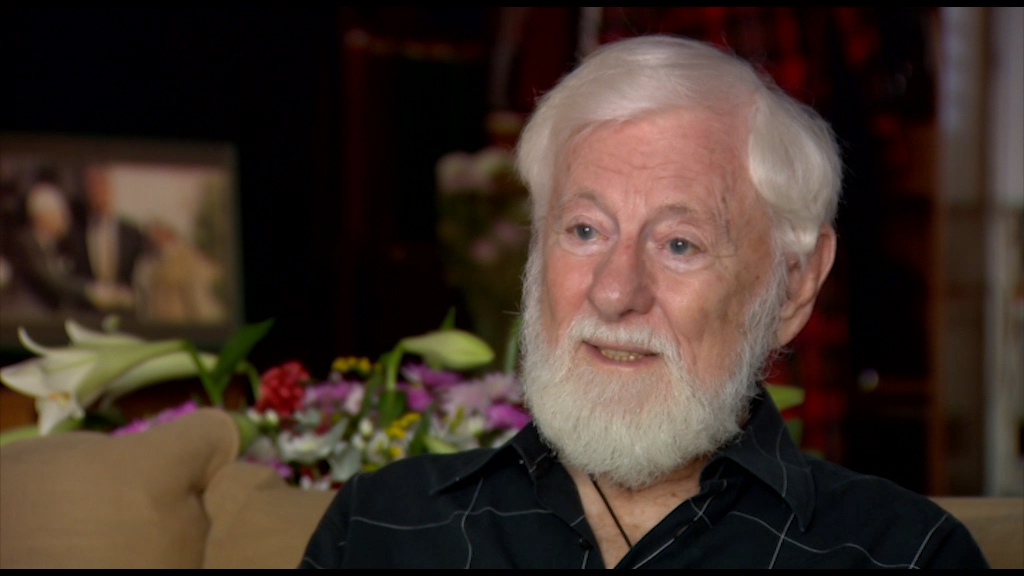NEXT STORY

Ben-Gurion announces the establishment of the State of Israel
RELATED STORIES

NEXT STORY

Ben-Gurion announces the establishment of the State of Israel
RELATED STORIES


|
Views | Duration | |
|---|---|---|---|
| 31. One-nation state | 24 | 03:21 | |
| 32. ‘We vowed to you, Homeland’ | 17 | 03:06 | |
| 33. Joining the army | 23 | 02:39 | |
| 34. Carrying my first dead body | 24 | 02:03 | |
| 35. Convoy to Jerusalem | 16 | 02:48 | |
| 36. Conquering the first Arab village | 19 | 02:31 | |
| 37. The Burma Road | 21 | 02:26 | |
| 38. Battle of Latrun | 34 | 02:43 | |
| 39. Photographing the battle of Latrun | 23 | 02:14 | |
| 40. Ben-Gurion announces the establishment of the State of Israel | 26 | 03:24 |


And this gang of ours was storming Latrun like they do in the movies, and they were cut down. I think they killed 100 people within minutes right before our eyes. And at the end they all fled and we were left on our own in the field. The enemy had not yet found us. We tried not to be discovered. Then we received orders to retreat. We had remained alone in the area and we retreated.
I forgot to say before that I had bought a camera. Something primitive, from the Italian army from the World War I that I could have played football with and nothing would have happened to it. And I decided that I was going to photograph this battle and I photographed everything from the balcony. We were coming down this hill on the way home, and a few fellows were running with someone badly injured on a stretcher. They were carrying the stretcher and we joined them and I took a picture. And I have a picture of a soldier with an angry face turning towards us and saying something, and what he said was: 'Bastard – throw the camera away and help us carry him!'
Well, we were last ones in the field, of course. For some reason al-Qawuqji's people moved slowly, but we could already see them. We saw them attacking. And we reached Arabic Hulda, what is now called Nachshon, and we were a beaten army. I have a picture of this withdrawal. We really looked like a beaten army. So that was the big battle. Later, they sent us to attack [Al-Qubab].
והחבורה הזאת שלנו הסתערו על לטרון כמו שמסתערים בסרטים, וקצרו בהם. אני חושב שהרגו איזה מאה אנשים תוך דקות. ממש לנגד עינינו. ובסוף כולם ברחו ונשארנו לבד בשטח. האויב עוד לא גילה אותנו. השתדלנו שלא יגלה אותנו. ואז קיבלנו פקודה לסגת. נשארנו לבד בשטח, ונסוגנו. שכחתי להגיד שלפני זה קניתי מצלמה. פרימיטיבית, של הצבא האיטלקי ממלחמת העולם, שיכולת לשחק אתה כדורגל ולא היה קורה לה כלום, והחלטתי שאת הקרב הזה אני אצלם וצילמתי מהיציאה אל הכל. ואנחנו יורדים מהגבעה הזאת בדרך הביתה, ורצים כמה חברה עם פצוע קשה, על אלונקה. הם סוחבים את האלונקה ואנחנו הצטרפנו אליהם ואני מצלם. ויש לי תמונה של חייל עם פרצוף מרוגז פונה אלינו ואומר משהו, ומה שהוא אמר: "נבלה, תזרוק את המצלמה ותעזור לנו לסחוב”. טוב, היינו אחרונים בשטח, כמובן. משום מה אנשי קאוקג'י התקדמו לאט, אבל ראינו אותם כבר. ראינו אותם מסתערים. והגענו לחולדה הערבית, מה שנקרא היום נחשון, והיינו צבא מוכה. יש לי תמונה של הנסיגה הזאת. ממש נראינו כצבא מוכה. אז זה היה הקרב הגדול. אחר-כך שלחו אותנו לכבוש.
Uri Avnery (1923-2018) was an Israeli writer, journalist and founder of the Gush Shalom peace movement. As a teenager, he joined the Zionist paramilitary group, Irgun. Later, Avnery was elected to the Knesset from 1965 to 1974 and from 1979 to 1981. He was also the editor-in-chief of the weekly news magazine, 'HaOlam HaZeh' from 1950 until it closed in 1993. He famously crossed the lines during the Siege of Beirut to meet Yasser Arafat on 3 July 1982, the first time the Palestinian leader ever met with an Israeli. Avnery was the author of several books about the Israeli-Palestinian conflict, including '1948: A Soldier's Tale, the Bloody Road to Jerusalem' (2008); 'Israel's Vicious Circle' (2008); and 'My Friend, the Enemy' (1986).
Title: Photographing the battle of Latrun
Listeners: Anat Saragusti
Anat Saragusti is a film-maker, book editor and a freelance journalist and writer. She was a senior staff member at the weekly news magazine Ha'olam Hazeh, where she was prominent in covering major events in Israel. Uri Avnery was the publisher and chief editor of the Magazine, and Saragusti worked closely with him for over a decade. With the closing of Ha'olam Hazeh in 1993, Anat Saragusti joined the group that established TV Channel 2 News Company and was appointed as its reporter in Gaza. She later became the chief editor of the evening news bulletin. Concurrently, she studied law and gained a Master's degree from Tel Aviv University.
Tags: Latrun, Hulda
Duration: 2 minutes, 14 seconds
Date story recorded: October 2015
Date story went live: 10 March 2017